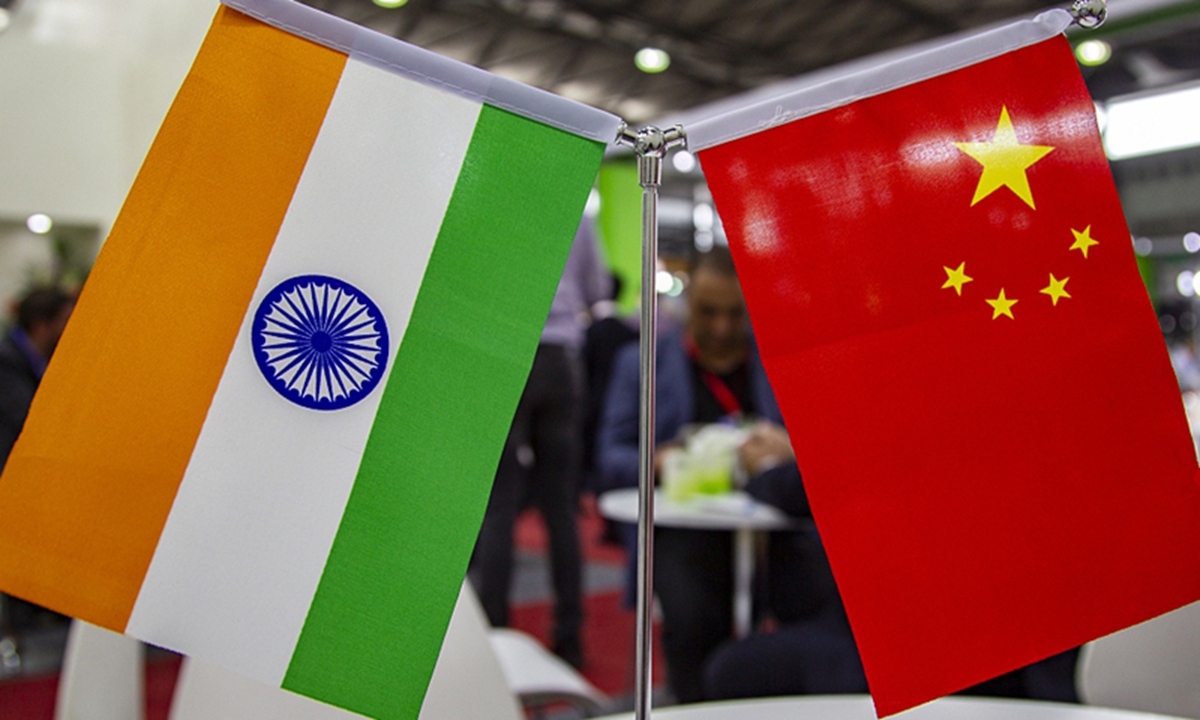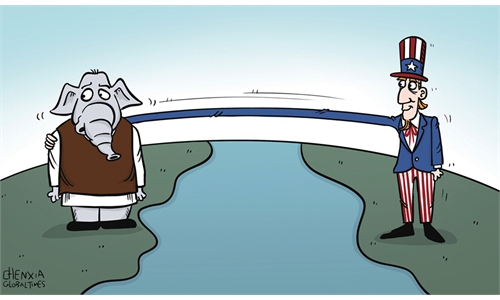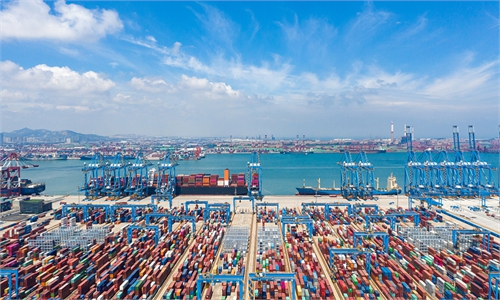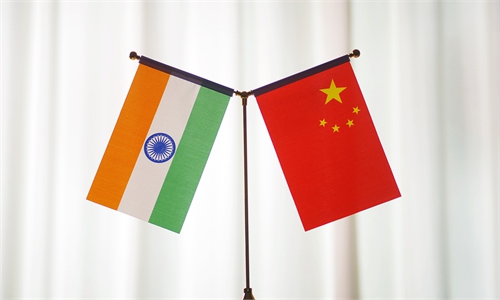
China India File photo:CGTN
At present, China-India relations are at a low point. Senior officials from both sides have expressed their expectation to improve the bilateral relations, but there are great differences on how to move forward with this and it is difficult to reach a consensus on why China-India relations have encountered setbacks.What is the current state of China-India relations?
Firstly, political relations between China and India are at a deadlock. After the Galwan Valley conflict, China and India negotiated through diplomatic and military channels to resolve the border confrontation peacefully and rebuild mutual trust. However, India has completely pushed the responsibility for conflict to China. Now, the Indian side takes the so-called status quo ante before April 2020 as the premise for the restoration of China-India relations.
Secondly, the tendency of military confrontation is more obvious. India has continuously increased its troops to the border, strengthened its weapons and equipment, increased its investment in infrastructure construction on its own side, and enhanced its military deployment along the Indian Ocean sea lanes, especially in the Andaman and Nicobar Islands and other places. The Indian military command has formed the "Tetra Group" to counter China.
Thirdly, India has been promoting the "de-Sinicization" of its economy, but the volume of bilateral trade has increased instead of decreasing. Although India cannot get rid of its dependence on some Chinese commodities in the short term, India will insist on "de-Sinicization," and the entry of Chinese enterprises and commodities into India will face more restrictions. India's ultimate goal is to realize the shift of industrial and supply chains to India at the expense of China's interests and replace "made in China" with "make in India" and "made in a third country."
Fourthly, the competition between China and India in South Asia, the Indian Ocean region and the multilateral fora is more intense. India has taken various measures to try and weaken China's influence in Nepal, Sri Lanka and other South Asian countries and undermine the BRI. India is promoting the development of Quad and the IPEF, strengthening military and strategic cooperation with the US, Japan, Australia, Britain, France and other countries, and defining a new Asian Order excluding China, which will make the region more chaotic. In multilateral cooperation such as the BRICS and SCO, how to check and balance China has become one of India's main goals.
Lastly, the people of China and India have a more negative understanding of each other. India's disinformation campaign domestically and internationally against China has become a serious problem. Anti-China sentiment in India is running high. After the Galwan Valley conflict, the Indian government took restrictive measures on people-to-people and cultural exchanges between China and India.
The current state of China-India relations is the result of the dual influence of international strategic environment and India's domestic political environment.
In terms of the international strategic environment, the US takes China as the largest strategic competitor and has put forward the Indo-Pacific Strategy, leading India to try and take advantage of this opportunity to contain China's rise, promote the shift of global industrial and supply chains from China to India and achieve its great powers rise in the process.
The domestic political environment in India has seen the rise of Hindu nationalism. The BJP, in order to realize its political agenda of national integration of "One Nation, One People, One Religion," and economic agenda of "Make in India" and "Atmanirbhar," has framed China as its imagined political and economic enemy.
The "forward policy" or "offensive defense policy" pursued by the Indian government and army in the China-India border areas is the direct cause of the confrontation and conflict along the border. The Indian army has never stopped encroaching on Chinese territory for decades. With an increase in US pressure on China in recent years and the development of Hindu nationalism within India, this encroachment has gained more momentum. China was forced to push back. This is the root cause of the Galwan Valley conflict.
In fact, from the Indian perspective, it is geopolitical conflict that is the biggest problem in China-India relations. The border issue has been deliberately instrumentalized by the Indian side.
Both China and India are developing countries. As a Chinese scholar, I fully understand India's desire to achieve economic development and its rise as a great power. At the same time, I also find that India does not want to become a junior partner of the US and sacrifice its own interests to safeguard US hegemony, but hopes to take this opportunity to become a new pole in the world. Ten years ago, I wrote that the relationship between China and India is a "competitive symbiosis" and I still hold that view. India now has a good status in the eyes of the US and the West mainly because the US and the West think they can use India as a counterweight to China. But the US and the West will never allow India to become as powerful as China. Likewise, in the case of the Russia, it is clear that the US does not want to see the rise of non-Anglo-Saxon countries and civilizations.
Chinese leaders have repeatedly expressed their respect for India's great power status and India's special interests in South Asia. The two countries should offer development opportunities to each other, continue to build mutual trust, avoid misunderstanding and miscalculation. If the Indian side wants to improve China-India relations, the ball is actually in India's court. Indian policymakers should change their hostile attitude toward China and completely abandon their opportunistic policy toward China.
The author is secretary-general of the Research Center for China-South Asia Cooperation at Shanghai Institutes for International Studies, a visiting fellow of the Chongyang Institute for Financial Studies, Renmin University of China, and a distinguished fellow of the China (Kunming) South Asia & Southeast Asia Institute. opinion@globaltimes.com.cn



